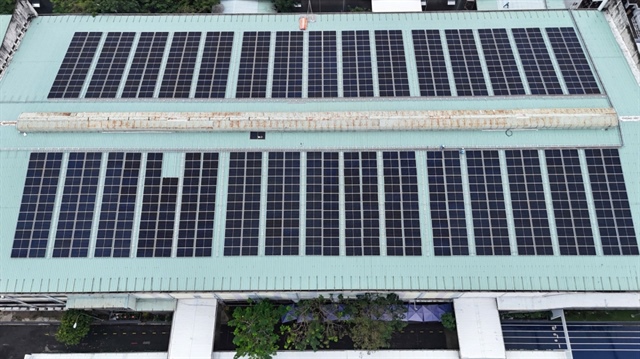Vietnam e-commerce sales to hit $15.4 billion in 2025
Vietnam e-commerce sales to hit $15.4 billion in 2025
Are encouraged to stay informed on economic trends, e-commerce strategies, and emerging consumer behaviors to drive continued growth.
The revenue of Vietnam's five major e-commerce platforms is expected to reach VND387.5 trillion ($15.4 billion) in 2025, with 4.2 million products sold, representing year-on-year growth of 22% and 23%, respectively, according to the latest online retail sales report released by e-commerce data platform Metric.

Vietnam's total gross merchandise value (GMV) of five major e-commerce platforms reach $12.7 billion in 2024. Photo: Hoang Giang/kinhtedothi.vn |
The report attributed this robust growth to a shift to online shopping, fueled by promotional strategies and seasonal holidays.
However, with significant fluctuations expected between the beginning and end of the year, it advised sellers to keep updating their knowledge on economic factors, e-commerce strategies and emerging consumer trends to sustain growth.
Vietnamese consumers spend millions of dollars on e-commerce
The report found that the gross merchandise value (GMV) of five major e-commerce platforms, including Shopee, Lazada, TikTok Shop, Tiki, and Sendo, reached VND318.9 trillion ($12.7 billion) in 2024, an increase of 37.4% from 2023.
This figure accounted for nearly 6.5% of the country's total retail sales for the year, according to the General Statistics Office. Notably, the growth rate for online channels is 4.5 times faster than the overall retail sector, which saw an increase of 8.3%.
In particular, Shopee and TikTok Shop reported year-over-year growth rates of 70% and 181%, respectively.
At the end of last year, Vietnam's E-Commerce and Digital Economy Agency estimated that the size of the e-commerce market would exceed $25 billion by 2024 - a 20% increase and significantly higher than the $22 billion forecast by Google, Temasek, and Bain & Company.
In 2024, Vietnamese consumers spent an average of VND873.6 billion ($34.8 million) daily on the top five e-commerce platforms. Actual spending may be even higher, as this figure does not account for GMV from social media transactions or cross-border platforms.
The volume of goods sold through these five platforms also surged by over 50% compared to last year, totaling more than 3.4 billion products. "These numbers indicate that the market's purchasing power remains strong," the Metric report said.
Categories such as beauty, home and living, and women's fashion continue to generate the highest sales on e-commerce platforms. However, food and grocery stands out with a remarkable growth rate of 76%, the highest of any category.
This trend reflects a significant shift in consumer behavior, with more shoppers choosing to shop online rather than in traditional markets or supermarkets.
Nevertheless, the number of stores generating orders dropped by 20% to 650,000, highlighting increasing competition. Metro suggested that this decline indicates a culling of smaller sellers lacking effective strategies, while larger, well-managed stores continue to thrive and expand.
Surge in cross-border trade in 2024

Vietnamese consumers spend an average of VND873.6 billion ($34.8 million) daily on the top five e-commerce platforms. Photo: Shopee |
In 2024, Vietnam saw a significant increase in imported goods, with more than 324.1 million products arriving on the market, generating sales of VND14.2 trillion ($564.5 million), up nearly 38% and 43% respectively from 2023.
According to Metric, Vietnamese consumers are increasingly comfortable buying products from abroad, thanks to improved logistics that increase shipping speed and reduce the risk of lost items. Moreover, platforms are offering better return policies and customer protection.
Competitive international pricing is critical, with many products becoming cheaper to produce.
The presence of 31,500 foreign sellers intensifies competition for local retailers in the online marketplace. "This is a critical signal for domestic businesses, requiring them to optimize their products and pricing strategies to remain competitive," the report said.


























